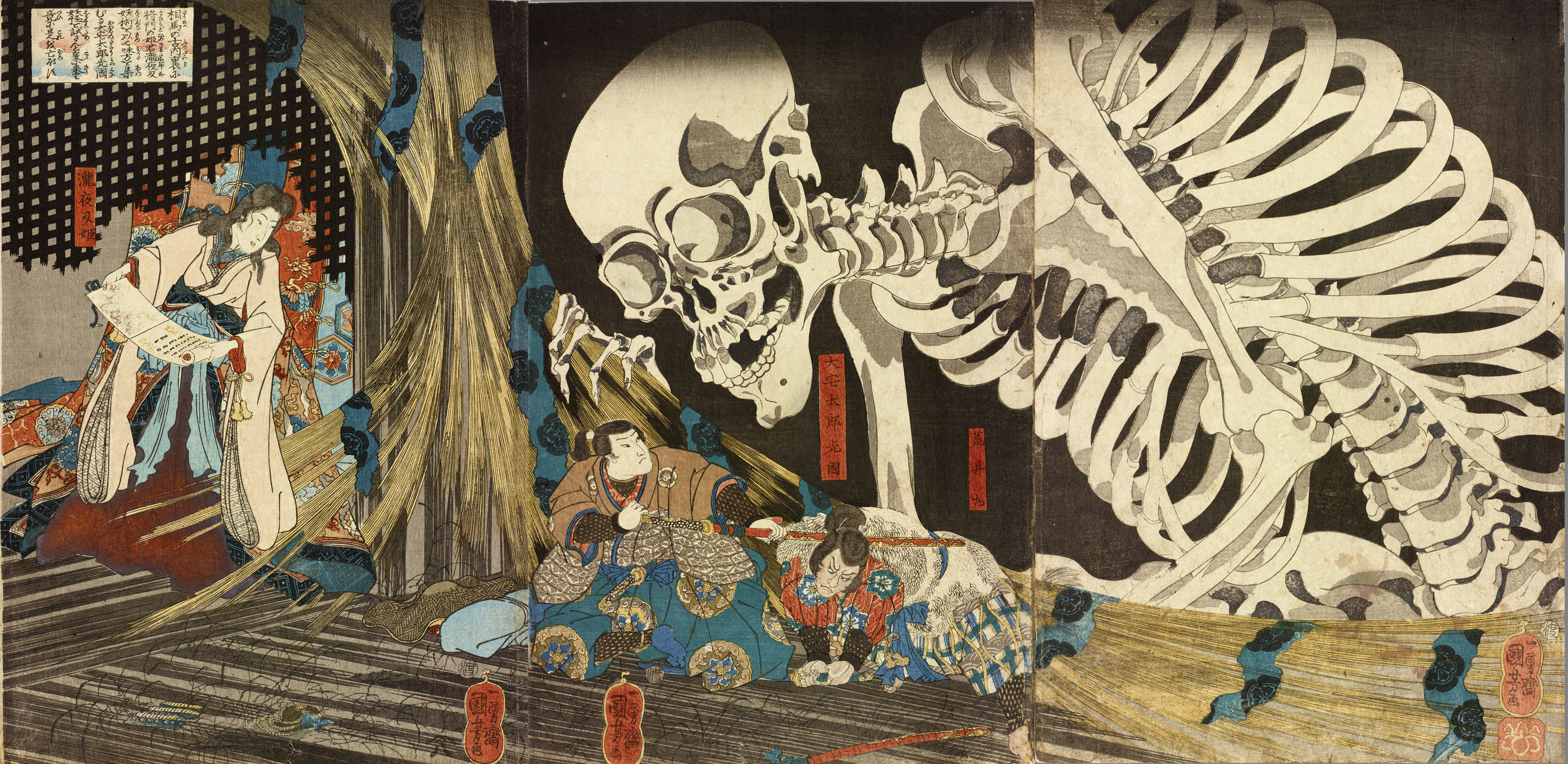Arranged from its extensive collection of ukiyo-e prints, the Ukiyo-e Ota Memorial Museum's special summer exhibition, is organized in three parts: part one, "Specters" (July 1-27) — stories of mythical spirits; part two, "Ghosts" (Aug. 1-26); and part three, "Sorcerers" (Aug. 30-Sept. 25) — depictions of humans with special powers and the supernatural creatures they call up from the underworld.
"Specters, Ghosts and Sorcerers in Ukiyo-e" showcases more than 250 Japanese woodblock prints of the Edo Period (1603-1868), depicting ghosts, goblins and other supernatural beings. The lurid subject matter, a graphic illustration of the shadowy spirit underworld, is as delightful as it is ghoulish. While ghost themes can be traced all the way back to the Hell Scrolls of the late Heian Period (794-1185), increased literacy and publishing innovations in the Edo Period introduced a new audience — the wider public — to printings of illustrated ghost stories. Edo's evolving popular culture, which began to emerge in the late 1600s and extended through the late 1800s, meant a steady demand for the work of ukiyo-e artists and writers, including illustrated books known as kusazoshi, or "grass tales," which were first introduced in the 1700s. Well-known ukiyo-e artists of the time were actively recruited by publishers to provide illustrations for new printed editions of familiar tales and folklore.
Examined from a cultural and social perspective, kusazoshi specializing in ghost themes were the printed equivalent of today's scary comic books and horror films, designed to titillate and amuse. When skilled ukiyo-e artists of the day — including Katsushika Hokusai (1760-1894), Utagawa Kuniyoshi (1797-1861) and Tsukioka Yoshitoshi (1839-92) — turned to the depiction of ghosts, their masterful renderings heightened the viewer's imagination, providing bone-chilling experiences. Towering skeletons dwarfed humans, as in Kuniyoshi's "Haunted Old Palace at Soma" (ca. 1845-46), exhibited in part three of the exhibition.



